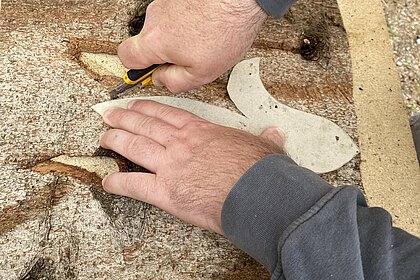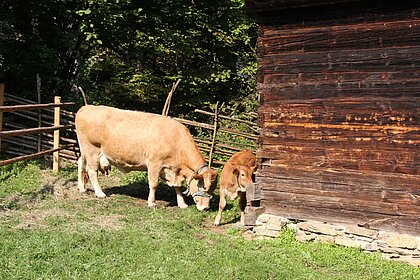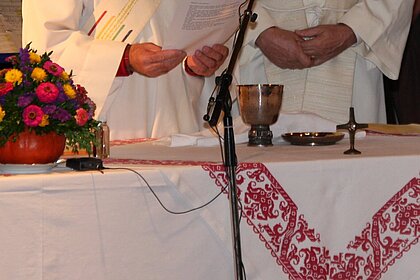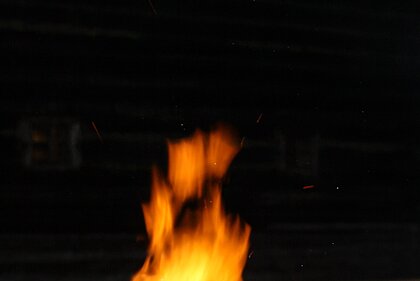In the wonderful month of May, nature blooms and thrives particularly intensively. This blossoming of nature is also a symbol of a spirit of optimism. In the farming world, May 1st was also a date for changing and hiring maids and servants. As the warm season begins, many more customs and traditions can be experienced.
Customs and traditions around summer

Image Credits
Walpurgisnacht
The night from 30 April to 1 May is known as Walpurgis Night. It has been known as Witches' Night at least since Goethe's Faust. In some areas, the maids who cleaned the house, yard and stable on this night would stick brooms, forks, shovels and rakes into the ground upside down - with the tips pointing upwards - so that the witches would hang themselves in them when they came down the chimney. But it wasn't just the witches who played their tricks on this night of unrest; it was also a popular time to practise punishment. Unfavourable women were given dry branches with straw ribbons to put in front of their windows as a mark of shame or chaff was strewn in front of the gate. Disorderly farmers often found their tools on roofs and trees the next morning. Traditionally, the maypole, a tall fir, spruce or larch tree, is also felled and erected on this night. In some places, it was customary for the maypole to still be standing fresh in the forest at midnight and only cut down at dawn.

Image Credits
Maibaum
The "Maibaum" symbolises growth, the reawakening of growth in the springtime. On the evening before or in the night of 1 May, the tree is taken from the forest and cut down to the top. Various patterns are then carved into the bark of the lower part of the tree. One to three wreaths are hung under the treetops and colourful ribbons are attached. In the past, the Maibaum was usually erected at dawn, but today it is often put up as part of a celebration. "Maibaumkraxler" (climbers) now try to reach the bottle of red wine fastened under the top of the tree. During a celebration under the Maibaum, which is then entwined with colourful ribbons, a band dance is often performed. The setting up of the Maibaum is traditionally precise, but varies from region to region. The tree should actually be secretly felled in the forest on Walpurgis Night (the night before 1 May) and "stolen", which is supposed to be an honour for the owner, who is subsequently compensated. The fear that evil spirits could be hiding under the bark also dates back to pre-Christian times, which is why the tree is stripped of its bark.

Image Credits
Pfingsten
The word "Pfingsten" has its origins in the Greek term ‘pentekoste’, which stands for ‘fifty’. This is because Christians celebrate Pfingsten every year on the 50th day of the Easter cycle, 49 days after Easter sunday. In Austria, there are various customs on this day, as Pfingsten is also a spring festival. Similar to May customs, trees are planted and bonfires are lit. In addition, the night from "Pfingstsonntag" to" Pfingstmontag" is known as "Bosheitsnacht" (wicked night). It was customary to play a dubious trick on young girls. Here is a brief insight into the traditions and customs surrounding Pfingsten: In western, eastern and southern Styria, all kinds of mischief was played on the night of Pfingstsonntag. People searched in vain for objects that had been left outside or on the doorstep the day before. Anything that wasn't nailed down was taken, tied to the top of a tree or even placed on the roof of the house. It was not uncommon for the farmer to find farm equipment or even a lorry full of manure on the roof of his house on the morning of Pfingstsonntag.

Image Credits
The Almauftrieb
The traditional "Almauftrieb", which marks the start of alpine farming, takes place at different times each year, depending on the altitude of the respective alp. It usually takes place between mid-May and the end of June, often around the Whitsun holidays. This moment is not only of great importance for the animals and the farmers, but is also accompanied by numerous customs and rituals to ensure the welfare and protection of the herd. A widespread custom was to sprinkle the animals with holy water before the cattle drive. Alternatively, they were made to walk over two palm branches, which were laid on the ground in front of the stable door in the shape of a cross. These symbolic acts were considered protective rituals and were intended to bring good luck and health to the cattle and people on the mountain pasture. In addition, there were special feed gifts, so-called "Maulgaben), which were given to the animals before they were driven up. Typically, these were dumplings made from cornflour to which "Maiwipferln", juniper berries, Epsom salt and a few drops of turpentine or balsam oil were added. These additives were not only intended to promote the well-being of the animals, but also to give them strength for the upcoming time on the mountain pasture. Such rituals still have a firm place in farming culture today and reflect the deep connection to nature.

Image Credits
Fronleichnam
"Fronleichnam" is an important day of the Roman Catholic Church, which is celebrated on the second Thursday after Pfingsten. The name comes from old-German and means "body of the Lord", which refers to the Eucharist. The feast honours the institution of the sacrament of the altar. In various regions of Austria, there are specific customs for the celebration of Corpus Christi. In Styria, statues of saints are carried during the procession. The Blessed Sacrament is carried in a monstrance under a canopy along the procession route to four altars. In Upper Austria, in addition to the land processions, there are also lake processions in which boats sail on Lake Hallstatt and Lake Traunsee. This tradition goes back to the time of the Counter-Reformation and used to serve as a blessing for the salt mines. In Laufen near Salzburg, a special ceremony is held in honour of the boatmen who transported salt and often died in dangerous waters. The master mariner lifts a consecrated communion wafer into the water, accompanied by boys in white and red robes who symbolically wave a cloth with a wreath of communion wafers.

Image Credits
Sonnwend
The Bonfire of St John was a widespread custom in Europe that was celebrated on the summer solstice. The fires, which were lit on the night before St John's Day (24 June) or on 21 June, symbolised the sun and were believed to ward off evil spirits, illness and damage to livestock. Traditionally, the village youth collected wood and built a large woodpile, often decorated with two straw dolls, the "Sonnwendhansl" and the "Gretel". When the fire was lit, songs were sung and prayers said. Young couples jumped over the fire, which served as an oracle of love. People left the fire before midnight, as it was believed that devils and witches jumped over it afterwards. In some regions, such as Lake Hallstatt and Lake Attersee, the fires were even lit on rafts, which gave the custom a special flavour. Solstice bonfires were an important part of the community and combined religious belief with socialising.



















